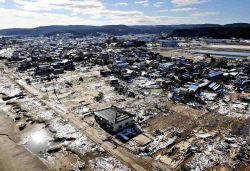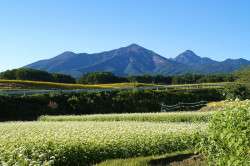
February 28, 2013
The Floating World
Chiba’s natural waterway district offers a taste of history
By Metropolis
Originally published on metropolis.co.jp on February 2013


In the north of Chiba near the banks of the Tone River is Sawara, a town surrounded by rice paddies that thrives on family businesses. At 10:30am every morning, the sleepy town opens its shops of handcrafted furniture and homemade sweets. Just 70 kilometers from central Tokyo and only 15 kilometers from Narita International Airport, Sawara’s countryside location and hometown-feel is the perfect daytrip for those looking for a peaceful vacation spot. Weekends are ideal to stroll the streets of the town’s historic waterway district where time seems to have stopped during the Edo period.
The main waterway in Sawara is the Ono River, a small river that stems from the nearby Tone River. This waterway was the key to Sawara’s prosperity during Edo times when sake and culture was easily traded with the capital. At the peak of the sake trade in the 19th century, the local community developed a “better than Edo” attitude due to their booming businesses and cultural trade. Here, over 65 sake breweries flourished, and a wealthy economy was created in the city.
Until the beginning of the 20th century, Sawara continued to grow in all aspects. Merchants and businesses made their home near the Ono River, most notably Tadataka Ino, the first person to accurately map all of Japan, whose house is open for visitors today. River-based commerce dwindled with the emergence of the railroad, and since then, the breweries that once crowded Sawara have dwindled to a single family-run brewery. Rather than trade, the town now thrives on festivals and tourism.
In the waterway district, many stores and restaurants that have operated as family businesses for hundreds of years still sit along the Ono River in their original housing. Women dressed in traditional work-wear pull gondolas to the docks where visitors can take a water excursion beneath the branches of the willow trees as they enjoy the natural surroundings.

The Ono River plays a central role in all of Sawara’s seasonal festivals. During the Doll Festival in March, young girls and women dress in traditional kimono and greet visitors as they drift down the river in gondolas. During May and June, thousands of irises bloom along the riverbank, and during summer and autumn, visitors can enjoy the Sawara Taisai Festival, when dozens of elaborately carved Edo period floats are pulled along the water. When the floats aren’t in use, they are stored in the Festival Float Museum next to the Katori Jingu Shrine, and can be seen by tourists during the off-season. Between festivals, the gondola ride gives an excellent vantage point of the rich architecture found in the historic buildings. Gliding along the water, it is almost as if you are taking a boat ride through a museum.
Across from the docks, one of Chiba’s oldest sake breweries, Baba Honten, can be found. During the peak of sake brewing season in the winter, large balls made of cedar branches hang in front of the sake shops to announce to customers that this year’s sake is ready. When the cedar balls are hanging, it’s time to make a reservation and visit one of the breweries for a tour and to taste the freshly squeezed sake. To visit a brewery filled with culture, traditional techniques, and a unique taste, Baba Honten in Sawara’s waterway district is the perfect destination.
From the Ono River, you can see a red brick chimney towering over the clay Edo buildings. Here is where Baba Honten has made sake for nearly three hundred years. The Baba family originally came from Nara Prefecture during the early 1680s to make sake in Sawara, and to this day, a descendant of the original founder operates the company. For fifteen generations, the Baba Honten has used traditional methods of brewing to ensure the quality of its sake. The unique sweet and syrupy taste of their mirin rice vinegar, unmatched by store-bought brands, also should not be missed.
A visit to Chiba is a relaxing getaway from the bustle of Tokyo, where the skyscrapers seem to swallow the crowds. In the open space of Sawara, a romantic feeling from the Edo era can be felt as you take a leisurely boat ride down the river or stop at one of the shops to grab a cup of freshly brewed sake. A tourism center is located near the historic district, with information in Japanese, English and Chinese—so planning your trip is nearly effortless.
Baba Honten
- 614 Sawara, Katori City
- Tel: 0478-52-2227
- Open daily 9am-5pm
- Reservation required
Katori City Commerce and Tourism Section
- Tel: 0478-50-1212 (English)
- www.katorishi.com/en/ (English)
Festival Float Museum
- 3368 Sawara-I, Katori City
- Open Tue-Sun 9am-4pm (8:30pm during the Gion Matsuri), closed Mon (or Tue after hols)
- Fee: Adult ¥400 (group of 15 or more, ¥350 each). JHS or below ¥200 (group of 15 or more, ¥150 each)
Ino Tadataka Museum
- 1722-1 Lee Sawara Katori, Chiba Prefecture
- Tel: 0478-54-1118
- Open daily 9am-4:30pm
- www.city.katori.lg.jp/museum/ (Japanese)







